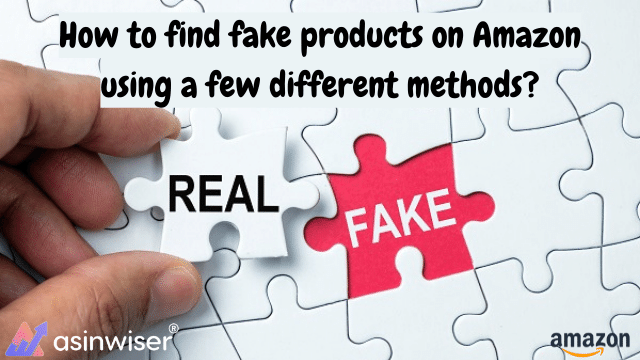
How to find fake products on Amazon using a few different methods?
Amazon is one of the oldest D2C direct-to-consumer marketplaces. Not only does it offer goods but also premium services. Although Amazon manages warehouses all over the globe, it also permits sellers to sell products on its marketplace, including individual sellers who sell new and used products. On the other hand with a fairly open policy, few third-party sellers have noble intentions and hold themselves accountable for any fraudulent activity occurring on their Amazon store.
Most people don’t realize this, but the majority of listings on Amazon aren’t actually for items sold by Amazon as they’re run by third-party sellers. And even though many, many third-party sellers are honest yet they are vending fakes.
Spotting fake products on Amazon is not an easy task. It involves various technical details along with it and decent knowledge about the functioning of Amazon. You need to look at a bigger picture and must know how to look beyond the product photos and reviews, product descriptions, ratings, and other data to find the legit and the counterfeit before you make any purchase on Amazon.
Don’t fret over this. Because we have got you covered. Here’s how to spot fake products on Amazon using different methods.
4 ways to spot fake products on Amazon.
1. Check the Seller Reviews
Do you know that seller reviews on Amazon are easy to fake? Generally what Sellers do is purchase products for themselves with their own money. This is the most commonly employed method to leave fake reviews from multiple accounts on their seller profiles. Hence it is recommended to check seller’s reviews thoroughly before making a purchase. You must look for multiple identical or single-word user responses that can be fake reviews.
2. Odd Spelling is a Warning Sign
Amazon runs machine-driven behind-the-scenes controls to keep fake sellers away once they’ve been blocked. As email is trying to get through a spam filter, sellers will fill their supplied Amazon names with alternative characters and intentional misspellings to get through Amazon’s defences. If the name of the vendor looks doubtful then chances are it is probably fake.
3. Fake ASINs
Fake Amazon Standard Identification Numbers (ASINs) empower unauthorized resellers to generate Amazon sales pages that may be covert by your price tracking software. Because ASINs are comparatively easy to create, fearless resellers tend to take several listings. For the reason that Amazon enables similar products to be listed, resellers often try to squash your product listings in Amazon search results with their fake listings, generally under multiple fake seller names.
4. Exaggerated product listings
Fake sellers will also overdo and exaggerate product listings with fabricated details that allure prospective customers to turn into customers. These fake listings will be competing with authorized resellers for people’s attention. Because resellers end up making fake promises. You may find that customers select the fake seller of your legitimate product listings. These false promises undoubtedly lead to customer satisfaction but when caught ruin your reputation.
Wrapping up thoughts
Undoubtedly, Amazon seems to be taking fake sellers more seriously than they used to. Hence, Amazon begins to guard its reputation fiercely. If you’ve been cheated by a fake seller that ceases to exist just contact Amazon’s customer service department.
Having an intelligent software tool—Asinwiser—for online sellers will assist you to run your business in the right direction. Asinwiser.com is an excellent solution that will help you to target your potential audience with its all-in-one features such as brand story, product research, competitor research, profitability calculator, fba calculator and so on.
Share this:
Subscribe to Our Newsletter
Recent Post
- Top 13 Amazon Inventory Management Tools for FBA Sellers in 2023
- Asinwiser: The Ultimate OMSGuru Alternative for Amazon Sellers
- Repricer.com Alternative: Why Asinwiser is the Superior Choice for Amazon Sellers
- Aura Alternative: Why Asinwiser is the Superior Choice for Amazon Repricing
- Maximize Amazon Sales with Asinwiser: The Superior Amazon Repricer & Revenue Analytics Tool
